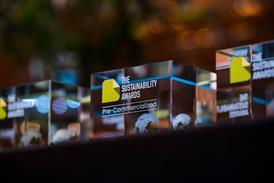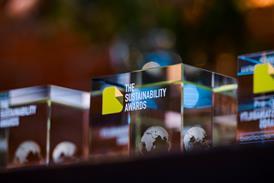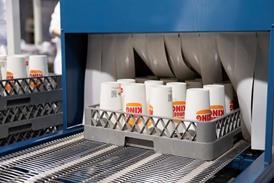
Henkel has unveiled its new hot melt adhesive, Technomelt EM 335 RE, aiming to address the challenges of conventional hot melt adhesives and enable clean separation for labels on PET bottles.
The company says that conventional hot melt adhesives used for PET bottle labelling are difficult to remove during the recycling process, and that even in the hot caustic soda bath, part of the standard processing procedure, only 12-30% of the adhesive typically dissolves. Henkel states that this results in contaminated PET flakes that impair the quality of the recycled product due to cloudiness and yellowing and are no longer suitable for applications such as food packaging due to their reduced barrier properties.
Henkel’s Technomelt EM 335 RE is alkali-dispersible and can be removed by up to 98% percent, with the adhesive residue separated from the material stream along with the label residue. The new adhesive is said to have high performance and be ideal for paper and plastic labels.
According to Henkel, the adhesive can reliably bond up to 40,000 bottle labels per hour and boasts a low processing temperature of 110-140°C that protects equipment, saves energy and increases operational reliability. It is also said to be suitable for sensitive applications due to its mineral oil-free formulation and compliance with food regulations.
Back in May, Henkel announced plans to incorporate Synthomer’s CLIMA resins into its Technomelt hot melt adhesive portfolio in a strategic partnership and supply agreement, hoping to lower carbon emissions by at least 20% while maintaining product quality. Incorporating raw materials with reduced process emissions footprint into Henkel’s adhesive formulations is expected to help lower Scope 3 emissions without affecting overall product quality, reliability, or results.
Last month CCL Label revealed its EcoShear label optimized for one-way glass recycling, said to reduce label contamination to 2% and reduce landfill glass waste to 1.5kg per tonne. The solution apparently has ‘outstanding performance’ with durability and visual appeal on shelves and throughout consumer use, combined with a guarantee for easy recycling at end of life.
If you liked this story, you might also enjoy:
The ultimate guide to the Packaging and Packaging Waste Regulation in 2025
How are the top brands progressing on packaging sustainability?
Everything you need to know about global packaging sustainability regulation in 2025
The key to increasing the use of reusable packaging in supermarkets
















No comments yet